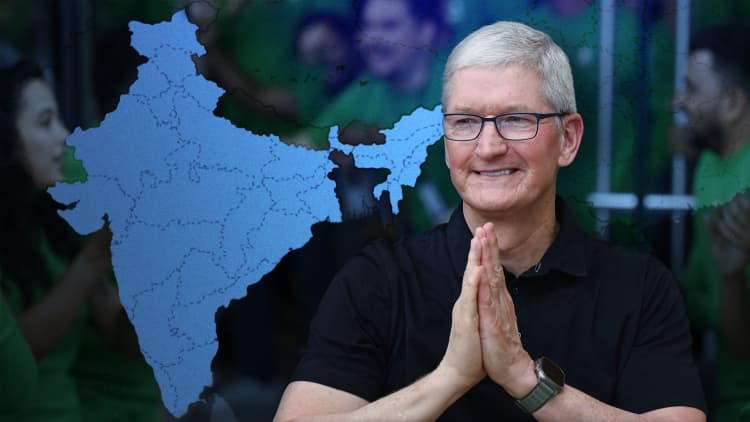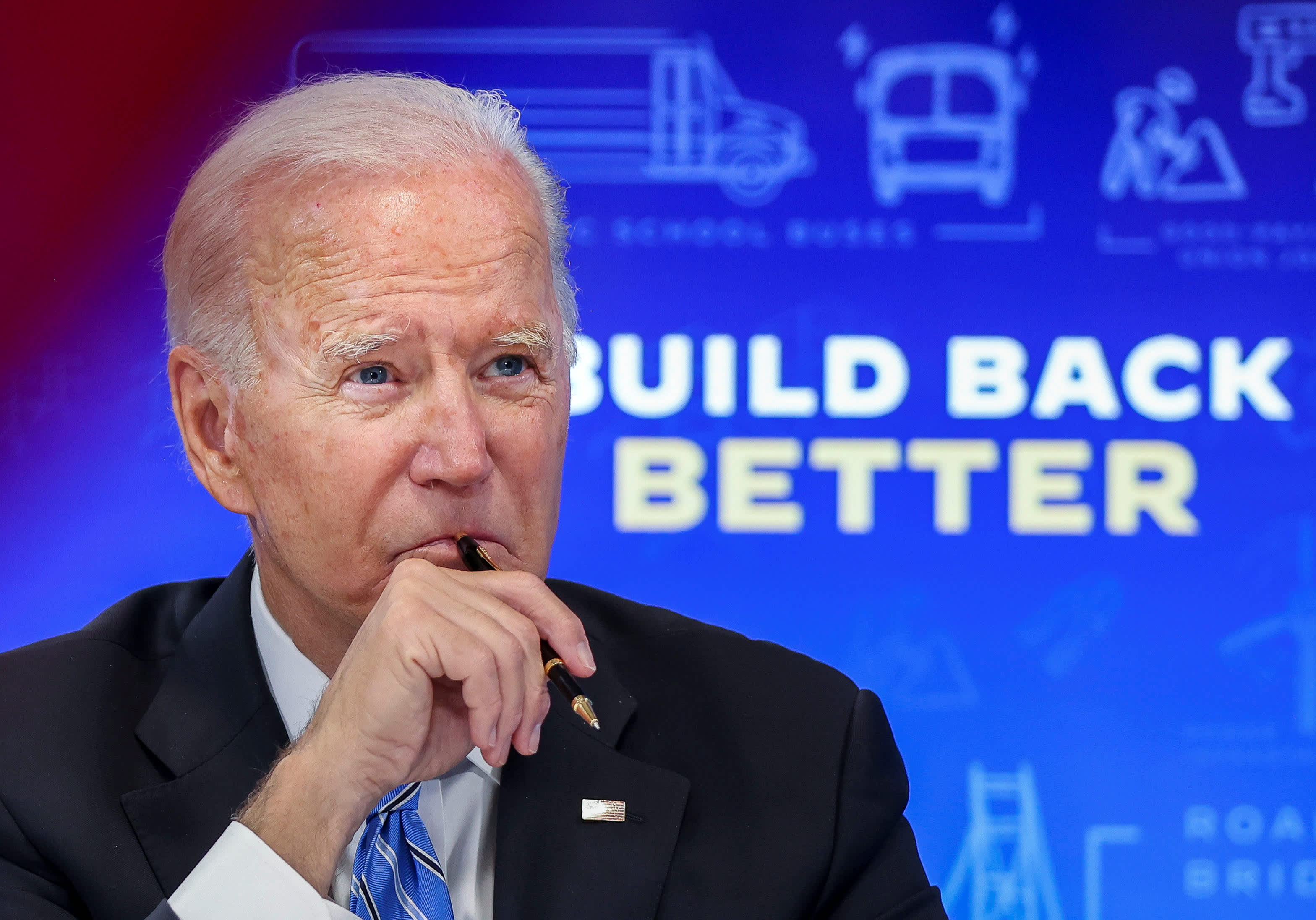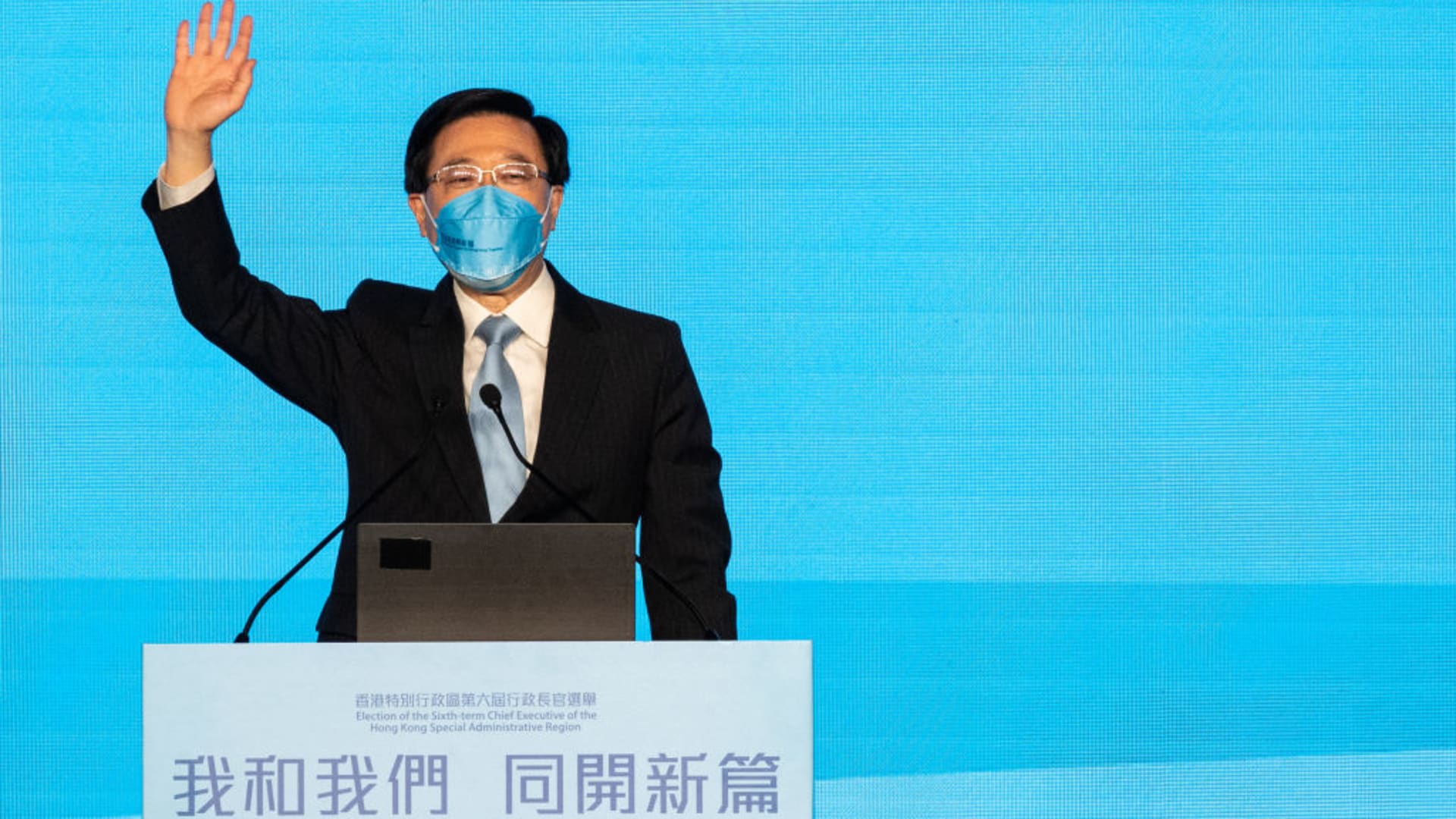India wants to become a semiconductor powerhouse, but it can't do it on its own
India has big ambitions to become a semiconductor powerhouse as the world's fifth-largest economy pushes for self-reliance in manufacturing.

Workers assembles smartphones at Dixon Technologies factory in Uttar Pradesh, India, on Thursday, Jan. 28, 2021.
Bloomberg | Bloomberg | Getty Images
India has big ambitions to become a semiconductor powerhouse as the world's fifth-largest economy pushes for self-reliance in manufacturing.
Indian Prime Minister Narendra Modi has set numerous goals to propel the country's semiconductor sector forward, with the latest and biggest target being to grow the country's electronics sector from $155 billion today to $500 billion by 2030.
The announcement turned heads and raised eyebrows, and industry experts that spoke to CNBC have opposing views on whether the target is realistic. However, they all agree on one thing: India cannot achieve this goal on its own.
"While the speed of development seems to be fast and the momentum is there, India has just started to embark on the semiconductor industry development from scratch," said Eri Ikeda, assistant professor at the Department of Management Studies at the Indian Institute of Technology Delhi.
Taiwan is currently the world's largest chipmaker, holding approximately 44% of global market share, followed by China (28%), South Korea (12%), the U.S. (6%) and Japan (2%), data from Taiwanese consultancy Trendforce showed.
Bhatnagar pointed to how Taiwan's Powerchip Semiconductor Manufacturing Corporation will help India's Tata Electronics to build the country's first 12-inch wafer fab in Gujarat. He also noted American chipmaker Micron Technology is set to roll the first India-made semiconductor chip in 2025. Last week, U.S. chipmaker Analog Devices and Tata Group signed an agreement to explore building semiconductor products in India. These examples, he explained, show collaboration is necessary.
Lessons from China
India is increasingly viewed as a viable alternative to China for companies looking to diversify their supply chains amid geopolitical risks. However, analysts said India first needs to learn the ropes before it can compete with the East Asian giant, especially since its semiconductor manufacturing industry is still at a very nascent stage.
China reclaimed its position as India's top trading partner in financial year 2024, with bilateral trade between the two countries reaching $118.4 billion. India's imports of telecom and smartphone parts from China amounted to $4.2 billion, data from the Ministry of External Affairs showed.
"India is far behind China in semiconductor manufacturing. Although India may be able to run fast and catch up, China will be running faster," said Rishi Bhatnagar, chair of the Institution of Engineering and Technology's future tech panel. He added that collaboration rather than competition between the two countries is paramount.
"Even China is catching up with the technological advancements of TSMC and others, and building and scaling up its semiconductor industry by importing large amounts of equipment from the U.S. and Japan," Ikeda told CNBC in an interview.
Cozying up to the U.S.
Although India will still have to rely heavily on top chipmaker Taiwan and China, the South Asian nation plans to keep working with the U.S. to counter China, industry experts told CNBC.
Earlier in September, the U.S. Department of State announced it will partner with the India Semiconductor Mission and India's electronics and IT government body to improve the global semiconductor value chain.
This came just three days before the Biden administration rolled out new export controls on critical technologies, including quantum computing and semiconductor goods, a move that is likely to restrict Beijing's advancements in AI and computing.
For the U.S., India could help it diversify its chip sources and lessen its reliance on Taiwan, said Bhatnagar.
"They're investing in a democratically elected country with a legal framework and a growing number of English speakers. So when two democracies are talking, that's a very different kind of discussion. And we need to accept and agree this is needed when global scenarios are changing," Bhatnagar said.
Earlier this week, Modi met Nvidia's Jensen Huang and Google's Sundar Pichai, among other tech CEOs at a roundtable in New York after attending the annual Quad meeting. Huang said that "this is India's moment" and made a promise to partner with the country, Hindustan Times reported. CEOs of other semiconductor companies such as GlobalFoundries' Thomas Caulfield and AMD's Lisa Su were in attendance as well.
The Biden administration announced on Monday that the U.S. and India will spend $90 million over the next five years to study the technology that powers AI and semiconductors.
Bloomberg | Bloomberg | Getty Images
Other analysts said India's semiconductor focus can help boost U.S.' standing in its ongoing "chip war" with China, and ultimately help the country.
"India is willing to utilize the U.S. and even Chinese investments for its development of industry, which might end up competing with them if it is successful," said Ikeda.
"Apple is already exporting more items from India than they are selling in India."
Tarun Pathak
Research Director at Counterpoint Research
Still, she added there are many hurdles before India could truly compete with China on chips, particularly when it comes to infrastructure and investment.
"We are encouraging [the] semiconductor industry in a big way. We started building up the ecosystem, which is essential before we can see more and more foundries coming into the country to the actual chip making," Piyush Goyal, India's minister of commerce and industry told CNBC's Tanvir Gill in an interview.
India's upper hand
Although India still has ways to go before it becomes a semiconductor powerhouse, it has a number of advantages working in its favor.
India's low labor cost, for example, has made the country an attractive destination for companies looking to diversify parts of their supply chains away from China.
The monthly minimum wage in New Delhi for skilled workers is 21,215 Indian rupees ($253.85), while workers in Beijing earn 2,420 yuan ($344.30) during the same period. The minimum wage in each country differs across states and provinces.
"If India can become more technologically advanced and cater to the global demand with cheaper and fair quality products, it will have a competitive advantage over China," Ikeda said.
The world's most populous country, which Goldman Sachs says is set to be the world's second-largest economy by 2075, has already attracted investors like tech giants Apple and Google. Analysts predict these companies are set to further increase production in India.
"Apple is already exporting more items from India than they are selling in India. It's huge domestic market and young nation that gives India an edge," Tarun Pathak, research director at Counterpoint Research said.

That optimism is expected to be supported in the next decade as the country continues to make significant strides in connecting and modernizing its highways, railways and airports.
In the interim budget in February, Finance Minister Nirmala Sitharaman estimated capital expenditure will rise by 11.1% to 11.11 trillion Indian rupees ($133.9 billion) in the fiscal year 2025, largely focused on constructing railways and airports.
"The semiconductor industry doesn't need that many large ships and cargos. Chips are small items that can be transported by planes in large quantities," Bhatnagar said.
With the need for chips only set to increase from here, India could be a solution for many companies looking to lower costs and meet demand.
"I would not bet against India. When you look around the world, there are very few places where you can see the right kind of infrastructure, economics, stability and workforce to actually achieve this goal," Samir Kapadia, CEO of India Index and managing principal at Vogel Group said.

 ShanonG
ShanonG 
































